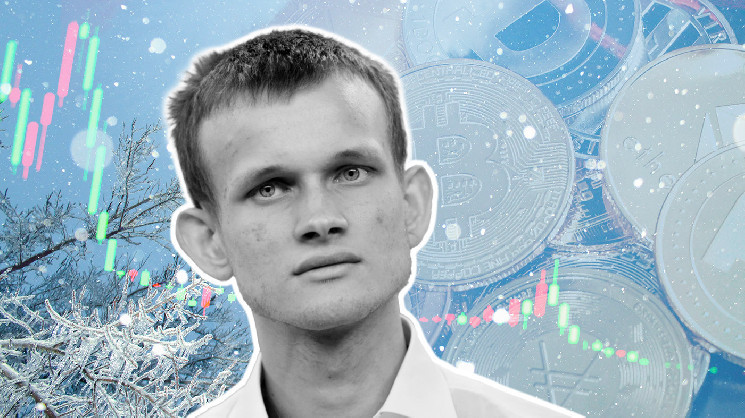Vitalik Buterin says crypto may benefit from a period of prolonged price depression, otherwise known as crypto winter.
The comments came during the ETHDenver festival, which ended on Sunday. However, the Ethereum co-founder clarified that he isn’t sure whether crypto winter has arrived or if recent price action reflects broader macroeconomic volatility.
Is crypto winter here?
Crypto markets are a long way from late-November 2021 highs. Peak to trough movement since then has seen a 45% outflow in the total market cap.
But does that mean crypto winter is here? Indeed, the numerous drawdowns since the start of 2022 have frayed the nerves of investors. And for some, it seems the latest sell-off is confirmation that winter is here.
There is no widely accepted definition of crypto winter. But it’s broadly defined as a period of flat trading following a price crash. However, as a vague definition, there is no way to say with certainty whether crypto winter is here. The issue becomes more confusing as analysts cannot rely on past data.
The previous crypto winter began at the start of 2018, following Bitcoin’s spike to $20,000. Over two months, $BTC fell 70% to $5,900, traded sideways until November 2018, before breaking support to hit a new bottom of $3,100 in December 2018.

Technically, as $BTC didn’t re-reach $20,000 again until December 2020, this crypto winter lasted three years.
This price action was determined mainly by retail investors. But since then, we’ve had an influx of institutional buyers. Chris Kline, the co-founder of Bitcoin IRA, said the arrival of institutions makes for greater risk tolerance marking “uncharted territory” for digital assets.
“Unlike past rallies that were primarily retail, the inclusion of larger institutions can affect price moves differently. … This is uncharted territory for crypto as we enter a new phase in its lifecycle with attraction from big players, hedge funds and even governments signaling that they are open to this asset class.”
That being so, it would be erroneous to expect things to play out as they did the last time around.
The benefits of depressed price action
Buterin puts a positive spin on crypto winter by saying many advocates, especially developers, “welcome a bear market.” He added that while price spikes bring euphoria, they also bring short-term speculative investors.
Explaining further, Buterin said winters have a culling effect whereby only the strong projects survive. During the last winter, there was a period of exchange closures, projects calling it a day, and significant movements in market cap ranking as once favored projects (such as NEM and NEO) began falling away.
“The winters are the time when a lot of those applications fall away and you can see which projects are actually long-term sustainable, like both in their models and in their teams and their people.”
As activity quietens down, Buterin said it allows developers to focus on building and improving the technology. That way, users will have a scalable and efficient experience once things pick up again.
 cryptoslate.com
cryptoslate.com
